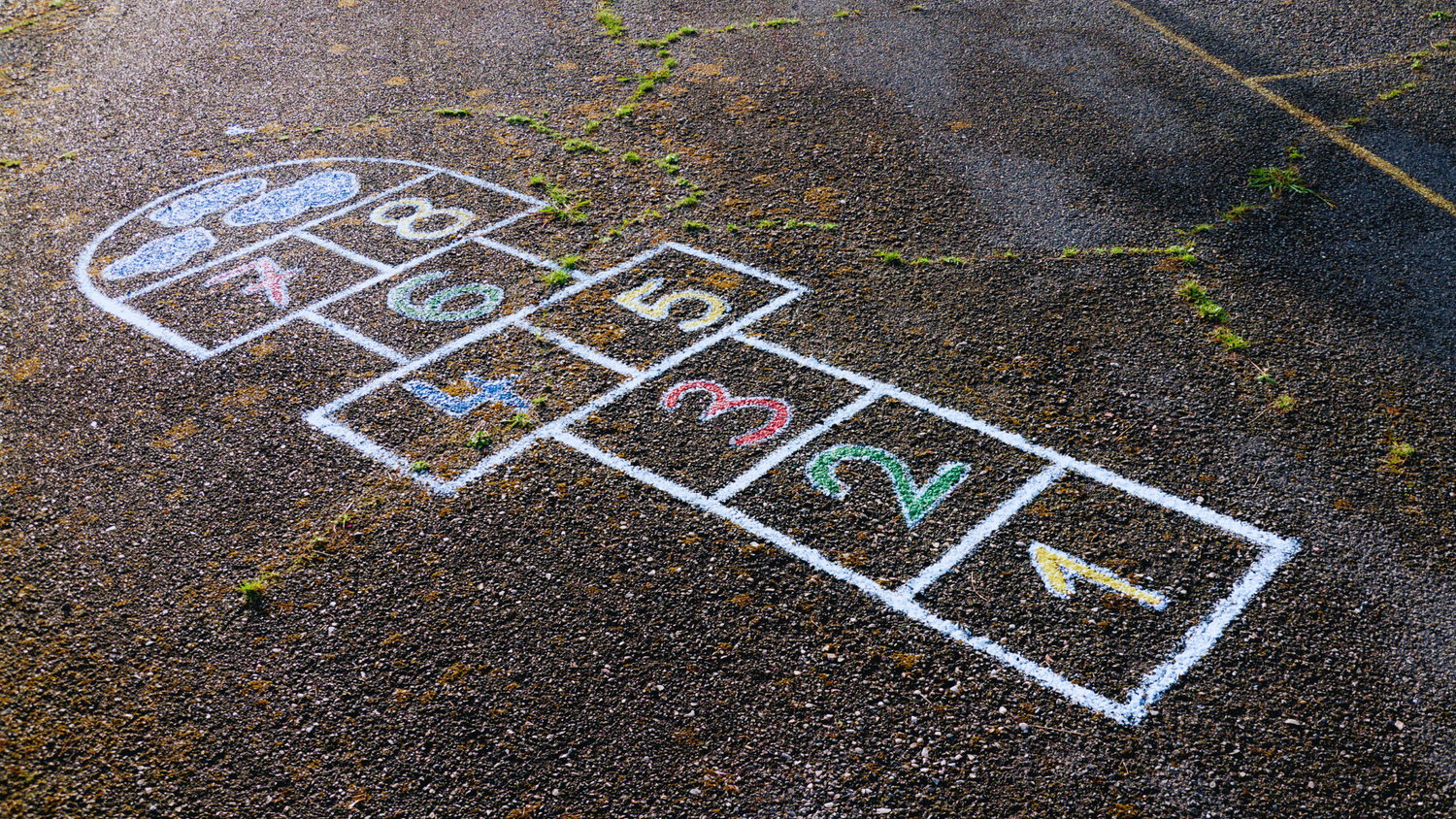Hop. Skip. Jump. Who would've thought one of the world's simplest childhood games had such an impressive backstory?
How to Play Hopscotch (Classic Rules)
-
Draw the Grid
Use chalk to create a hopscotch pattern on the ground—typically numbered 1 through 9 or 10. The layout usually alternates between single and double squares. -
Grab a Marker
Find a small object like a stone, beanbag, or bottle cap. This is your "marker." -
Toss the Marker
Stand behind the starting line and toss the marker into square number 1. It must land inside the square without bouncing out or touching the lines. -
Start Hopping
Hop through the course on one foot for single squares and land with one foot in each box on double squares. Skip the square with your marker. -
Pick It Up and Return
On your way back, stop on the square before the one with your marker, balance, bend down, pick it up, and then finish the course. -
Next Round
If successful, throw the marker into square number 2 and repeat. If you mess up—step on a line, miss a square, or lose balance—it’s the next player’s turn.
Keep going until you’ve tossed and hopped your way through every numbered square!
As we know it today, hopscotch is a favourite on schoolyards, driveways, and sidewalks. But the game hops back to ancient Rome. Yep, that's right—over 2,000 years ago, Roman soldiers used a version of hopscotch as military training. Instead of chalk-drawn boxes, they ran across 100-foot-long hopscotch-like grids in full armour to build agility and endurance.
Eventually, Roman children mimicked the training exercise in smaller versions, adding numbers, rules, and playful twists. The idea spread across Europe and was especially popular in England, called "scotch-hop" or "scotch-hoppers." As the British Empire expanded, the game made its way across the world—including North America—where generations of kids turned city sidewalks and rural roads into chalk-covered playgrounds.
No matter where it's played, the rules remain charmingly the same: toss a small object (often a stone), hop through the numbered squares without stepping on lines or the square with the object, retrieve it, and return. It's a beautiful mix of balance, coordination, and fun.
Why It Still Matters
Hopscotch isn't just nostalgic—it's sneaky exercise. It helps kids (and adults) improve motor skills, balance, and number recognition. Plus, it's free to play and easy to set up.
Pro Tip: Where to Buy the Best Chalk
If you're ready to draw your hopscotch grid, Crayola Washable Sidewalk Chalk is a top-tier pick. The colours pop, it's easy to hold, and it rinses immediately. You can find it at most department stores, but your best bet? Target or Amazon. Both have a variety of packs with bold colours that make your grid look like a masterpiece.
So next time you see a patch of pavement, grab some chalk and channel your inner Roman warrior—or giggling kid. Hopscotch is more than a game. It's a centuries-old legacy of fun.
Let the hopping begin. 🎯🟧🟦🟨





